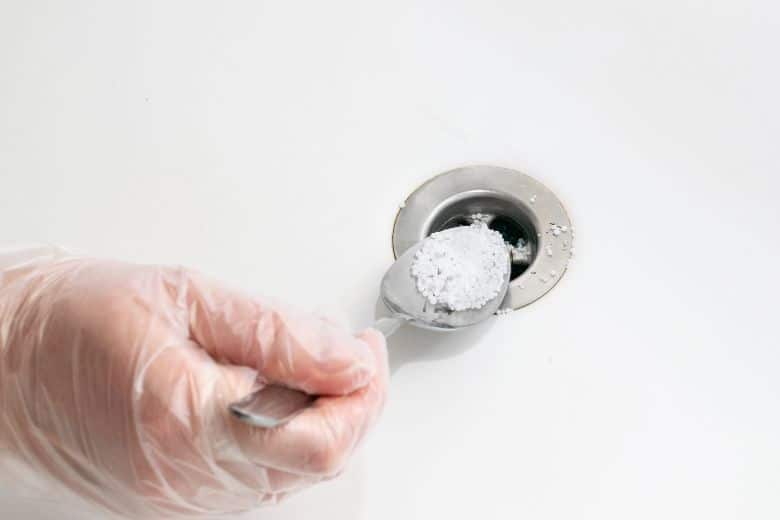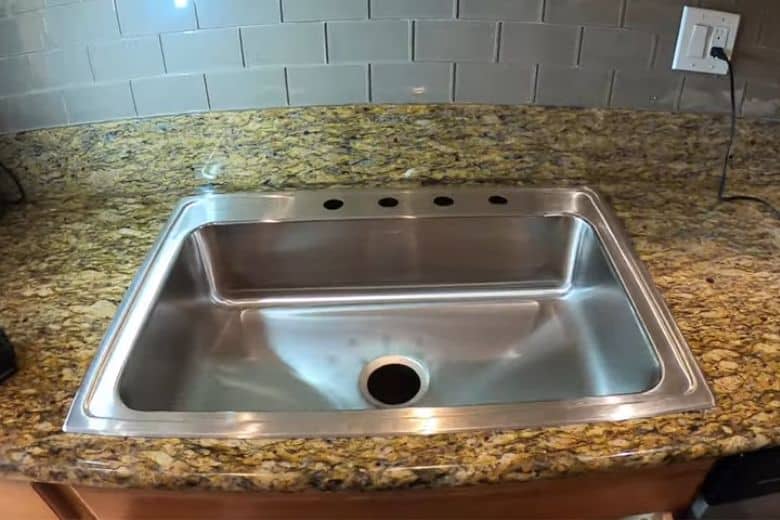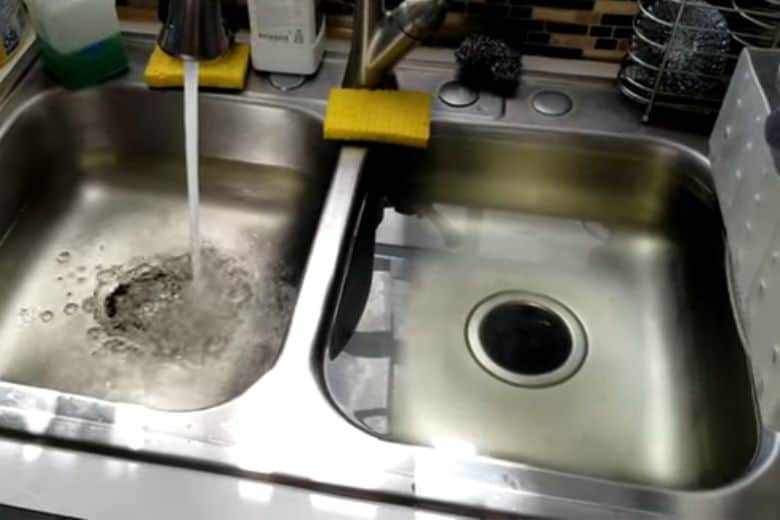The overflow hole in your bathroom sink isn’t just there for decoration. It’s a vital part of your sink’s design that helps to prevent water from spilling over if the faucet is left running. Besides prevents water from spilling over the sink if the drain gets clogged.
Eventually, keeping this hole clean is necessary to maintain your sink’s functionality and a sanitary bathroom environment.
In the case, neglected to clean, it can lead to unpleasant smells and possible drain issues.
Consequently, we have included guidelines on how to clean overflow holes in bathroom sink.
The good news is that this issue is easier to perform than it seems. A handful of regular household items combined with some elbow grease can make your sink overflow hole shine like new. You don’t need to be a plumber or have a cache of professional tools.
Have a look at the full details.
The Signs of a Clogged Overflow Hole
- Slow Drainage: Slow drainage is one of the first signs of a clogged overflow hole. If the water in your sink is taking longer than usual to drain, it could mean a blockage in the overflow hole.
- Unpleasant Odor: A clogged overflow hole can also lead to unpleasant odors. It is because the accumulated debris can start to rot and produce a foul smell over time.
- Water Overflow: If your sink overflows despite having an overflow hole, then it’s likely that the hole is clogged.
How to Clean Overflow Hole in Bathroom Sink (Step-by-Step Guide)
Gather these items before you begin cleaning to ensure a smooth and efficient experience. To clean the overflow hole in your bathroom sink, you will need a few essential tools and materials:
- A pair of rubber gloves
- A small cleaning brush or an old toothbrush
- White vinegar or a mild bathroom cleaner
- Baking soda
- A clean cloth or sponge
- A bucket or bowl to catch any excess water
Step 1: Put on Your Rubber Gloves
Before you start cleaning, you must protect your hands by wearing rubber gloves. It will shield your skin from any potential irritants or chemicals present in the cleaning products you’ll be using.
Step 2: Preparation
In step two, ensure that your sink is clean and dry. It will make the cleaning process easier and more effective.
Step 3: Initial Cleaning with a Brush
Insert the brush or wire into the overflow hole and gently scrub to loosen and remove the debris. These could include hair, soap scum, or any other foreign particles. Use your fingers or a pair of tweezers to pull out the debris gently.
Besides, insert your small bottle brush into the overflow hole. Move the brush up and down several times to dislodge any debris.
Step 4: Deep Cleaning with a Cleaning Solution
After the initial cleaning, prepare a cleaning solution of warm water and vinegar. Pour it into the overflow hole and let it sit for about 15 minutes. It will help to dissolve any remaining debris.
Gently scrub the inside of the overflow hole, ensuring you reach all corners and crevices. Use circular motions to dislodge any debris or mold buildup.
Step 5: Use Baking Soda for Stubborn Stains
If you encounter stubborn stains or mineral deposits inside the overflow hole, sprinkle a small amount of baking soda directly onto the brush or toothbrush. The abrasive nature of baking soda will help break down the stairs and make them easier to remove.
Step 6: Chemical Cleaning
If mechanical cleaning doesn’t work, use your commercial drain cleaner according to the instructions on the bottle. Always remember to rinse thoroughly afterward.
Step 7: Rinse and Repeat
Use a pitcher or cup to pour warm water into the overflow hole, effectively rinsing the solution. If you see more grime, repeat steps 2 and 3.
Step 8: Flushing Out the Residue
Once the fizzing has subsided, flush the hole with warm water to rinse away the solution and dislodge the grime.
Step 9: Dry and Polish
After rinsing, use a clean cloth or towel to dry the area around the overflow hole. It will help prevent the accumulation of moisture, which can lead to mold or mildew growth.
Now gently polish the area to give it a shiny and polished appearance.
Common Misconceptions about the Overflow Hole
The overflow hole isn’t a second drain. Its purpose isn’t to handle normal drainage—it’s a safety feature designed to prevent overflow.
How to Prevent Overflow Hole Blockages
Prevention is better than cure. Here are a few tips to prevent blockages:
- Avoid dropping small items like jewelry or hairpins into the sink.
- Regularly clean the overflow hole, even if it doesn’t appear dirty.
- Perform this cleaning process once every month.
- Avoid using harsh chemicals that can damage your pipes.
- Regularly check for blockages to prevent water from backing up.
- Periodically check the overflow hole for signs of leaks or water damage.
Frequently Asked Questions
What size brush do I need to clean the overflow hole in my bathroom sink?
Answer: The brush size will depend on the size of your overflow hole. A small to medium-sized bottle brush should work fine.
Why does my bathroom sink have an overflow hole?
Answer: The overflow hole prevents water from spilling over the sink if the drain gets clogged or the faucet is accidentally left on.
Is it necessary to remove the sink stopper before cleaning the overflow hole?
Answer: You don’t need to remove the sink stopper to clean the overflow hole. The cleaning process focuses solely on the opening near the top of the sink bowl.
Can I use a wire hanger to clean the overflow hole?
Answer: Using a wire hanger or sharp object to clean the overflow hole is not recommended. It can scratch the sink surface or damage the internal plumbing.
Can I use commercial cleaners to clean the overflow hole?
Answer: Yes, you can, but it’s not necessary. Simple household items like vinegar and boiling water can do the job just as well.
Is it necessary to use a cleaning brush?
Answer: Therefore, a cleaning brush can help dislodge stubborn grime and is recommended. However, if you don’t have one, you can still clean the hole using vinegar and hot water.
Can a blocked overflow hole cause damage?
Answer: A blocked overflow hole can cause water to overflow and potentially damage your bathroom. It can also lead to unpleasant odors.
What do I do if the overflow hole is still blocked after cleaning?
Answer: If the overflow hole is still blocked after cleaning, it may be best to call a professional plumber to inspect and fix the issue.
Conclusion
Cleaning the overflow hole in your bathroom sink is an easy task that needs to be addressed. However, regular cleaning ensures your sink functions appropriately and maintains hygiene levels in your bathroom. So, grab your cleaning supplies and start keeping a cleaner, healthier bathroom today.
Paul Newman is a blogger who writes about plumbing and home improvement. Over the past 20 years, I have worked as a plumber. My passion is to share my knowledge and experience with others to improve their homes.




